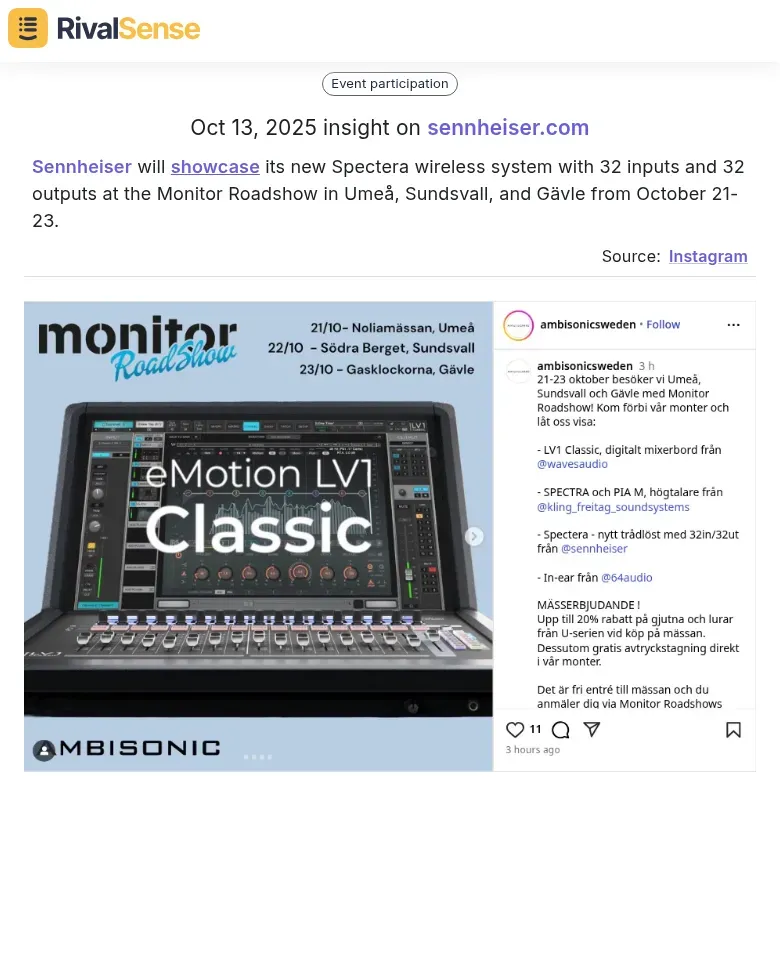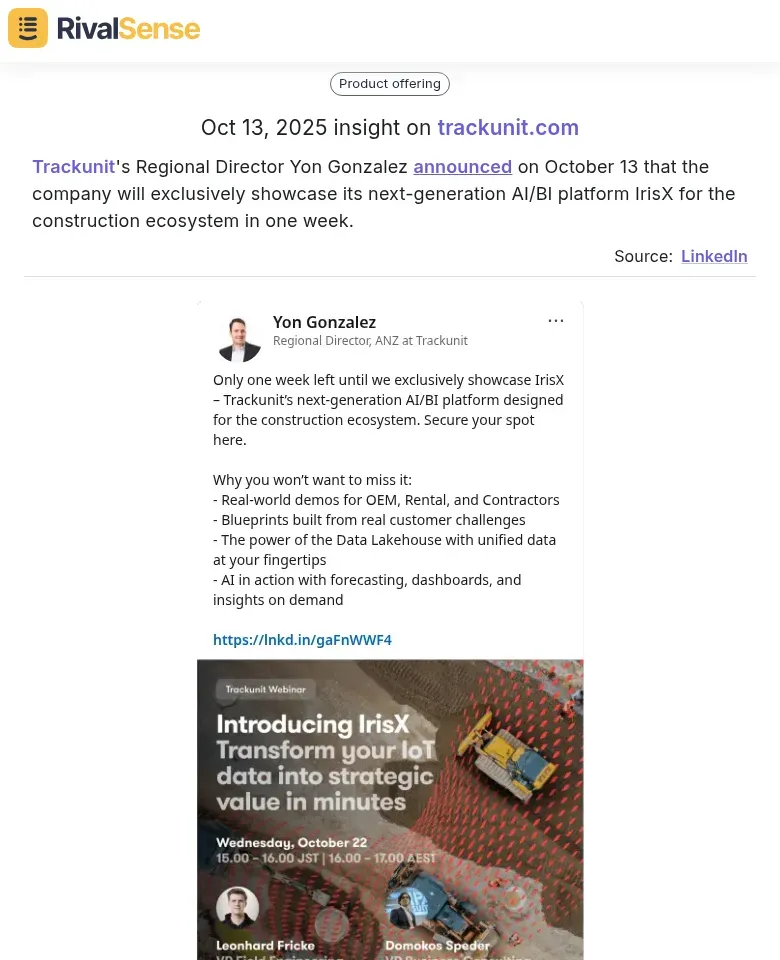Free Competitor Analysis Tools to Boost B2B Productivity
In today's fast-paced B2B environment, understanding your competitors is essential for maintaining a competitive edge and driving productivity. Competitor analysis enables you to uncover market gaps, refine your offerings, and make data-driven decisions that enhance operational efficiency. For instance, by monitoring rivals' product updates or pricing strategies, you can identify high-demand features to prioritize in your development roadmap. Free tools like Similarweb or Google Alerts provide accessible data for startups and growing companies, allowing you to track website traffic, feature launches, or pricing changes without significant investment. Practical steps: 1) Use free tools to monitor competitor blogs and social media for innovation trends; 2) Create a checklist of key metrics (e.g., user adoption rates, support response times) to benchmark against; 3) Regularly review competitor customer reviews to address common pain points. By leveraging these insights, you can optimize your products, reduce inefficiencies, and accelerate growth in your industry.
Essential Free Tools for Market and SEO Analysis
Effective market and SEO analysis starts with leveraging free tools to gain insights into competitor strategies and market trends. Google Trends and Keyword Planner are excellent for identifying emerging opportunities and gauging search interest in specific terms. For example, track keywords related to your industry to understand demand fluctuations and plan your content accordingly.
Use SimilarWeb's free version to analyze competitor traffic sources, such as organic search, referrals, or paid ads, and identify potential channels for your own campaigns. SEMrush's free tools help uncover top-performing keywords and assess search volume trends, enabling you to refine your SEO strategy. For backlink analysis, Moz's Link Explorer provides Domain Authority scores to target high-quality sites, while Ahrefs' free Website Authority Checker evaluates link profiles for credibility.
Practical Checklist:
- Use Google Trends to compare multi-year interest in industry-specific terms.
- Export top competitor keywords from SEMrush and filter for relevance.
- Audit competitor backlink profiles monthly with Moz to spot new opportunities.
- Set up alerts in Ahrefs for brand mentions on authoritative sites.
Social Media and Content Monitoring Tools for B2B Brands
Social media and content monitoring are vital for keeping tabs on competitor activities and audience engagement. Tools like Social Searcher and BuzzSumo allow you to analyze content performance, tracking shares, likes, and comments to identify popular topics. Set up Google Alerts and Talkwalker Alerts for real-time updates on competitor names, product launches, or industry keywords, ensuring you never miss critical developments.
Focus on engagement metrics by calculating rates (e.g., likes + comments + shares divided by reach) and comparing them across competitors to spot content gaps. If rivals excel in certain areas but lack depth in others, you can fill those voids with targeted content. Practical tip: Create a weekly checklist to review alerts, analyze top competitor posts, and document opportunities to stay ahead in your marketing efforts.
Product and Feature Comparison Tools for B2B Software
Benchmarking your software against competitors is straightforward with free tools like Capterra and G2 Crowd. Start by searching for relevant categories on these platforms to compare pricing, features, and customer satisfaction. Use their built-in comparison tools to side-by-side analyze what rivals offer and where you can differentiate.
Practical Checklist:
- Filter reviews by industry-specific keywords to understand user priorities.
- Compare pricing tiers and watch for hidden costs that could affect customer decisions.
- Identify feature gaps in areas like integration capabilities or analytics.
- Note recurring user complaints about usability or support to address in your offerings.
- Track competitor ratings over time to spot trends and adapt your strategy.
Key Insight: Look beyond star ratings—read detailed reviews to grasp specific pain points in workflows. For example, if multiple competitors receive feedback on poor integration, this highlights a market opportunity you can exploit.
Tracking Competitor Events and Announcements
Staying updated on competitor events, product launches, and partnerships is crucial for anticipating market shifts and refining your business strategy. Tools like RivalSense automate this process, delivering weekly reports on key activities without manual effort. For instance, tracking event participations can reveal competitor marketing focuses and networking strategies, helping you identify potential collaboration or competitive threats.

RivalSense identified that Sennheiser will showcase its new Spectera wireless system at the Monitor Roadshow. This type of insight is valuable because it shows where competitors are investing in visibility, allowing you to plan counter-strategies or explore similar events.
Monitoring in-person events, like Shure's configuration training for its Microflex Ecosystem, provides insights into how competitors engage customers and promote product adoption. This can inform your own customer education and retention efforts.

Early awareness of product launches, such as Trackunit's announcement of its IrisX AI/BI platform, enables you to prepare responses, whether through accelerated development or targeted marketing campaigns to highlight your unique advantages.

By integrating such insights, you can proactively adjust your business plans and stay ahead in a dynamic market.
Implementing Competitive Insights to Boost Productivity
Translating competitor data into actionable strategies requires a systematic approach to drive productivity gains. Start by mapping competitor feature gaps against your target market's pain points; for example, if competitors lack integration capabilities that customers prioritize, focus your development there. Create a quarterly competitive feature matrix to track opportunities and align your roadmap with market demands.
Optimize marketing and sales by analyzing competitor messaging and conducting win/loss analyses to understand why deals are won or lost. If competitors emphasize cost savings, retrain your teams to highlight your unique value, such as efficiency gains, using concrete ROI calculators. Measure ROI by tracking metrics like development cycle time reduction, sales conversion rates against tracked competitors, and customer acquisition cost before and after implementation. Practical tip: Focus on 2-3 high-impact competitors initially to avoid overwhelm and yield more focused insights.
Best Practices for Ongoing Competitor Monitoring
Establishing a consistent routine for competitor intelligence is key to staying informed without sacrificing productivity. Set up weekly automated alerts using free tools like Google Alerts for competitor mentions and conduct monthly deep-dives into their product and marketing updates. This ensures you capture trends without constant manual effort.
Integrate free tools seamlessly into your workflows by creating a centralized dashboard with Feedly for news aggregation and Similarweb for traffic insights. Train your team to spend just 15 minutes daily reviewing updates, embedding competitor tracking into routine meetings to maintain efficiency. Stay compliant with relevant regulations by avoiding the collection of sensitive information and focusing on publicly available data like websites and press releases. Use checklists to verify data sources are public, anonymize internal notes, and consult legal teams if unsure, keeping your monitoring effective and regulation-safe.
Ready to take your competitor analysis to the next level? Try RivalSense for free at https://rivalsense.co/ and get your first competitor report today! It tracks product launches, events, pricing updates, and more, delivering actionable insights directly to your inbox every week.
📚 Read more
👉 How VEED's AI Launch Drove a Competitor's Strategic Pivot
👉 Instagram Competitor Insights: A Checklist for Employee Benefits Analysis
👉 Data-Driven Key Account Intelligence for Competitive Edge
👉 Advanced Regulatory Competitor Insights for Market Share Analysis
👉 How PayPal's PYUSD Expansion on Stellar Reveals Key Competitor Moves
